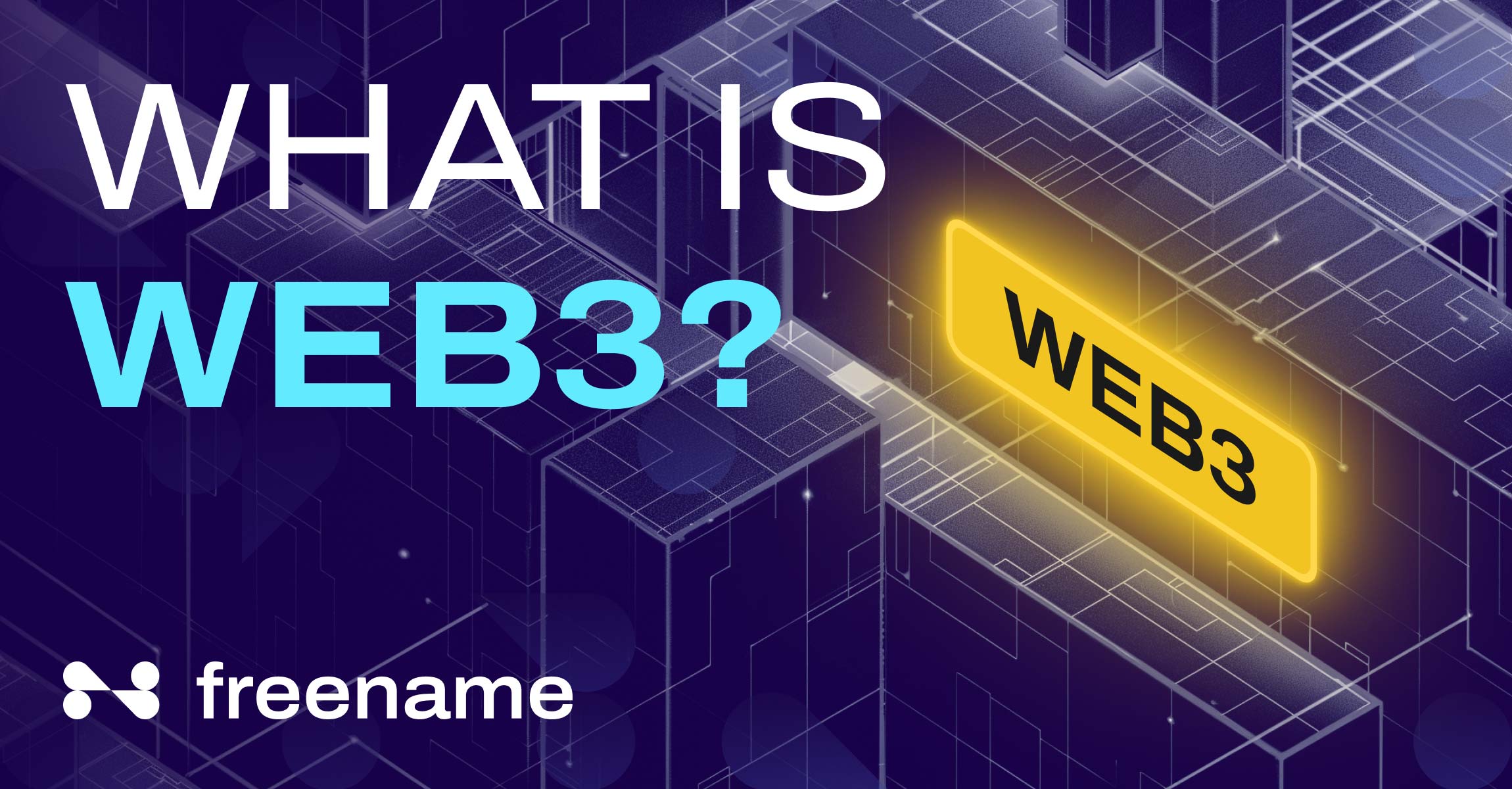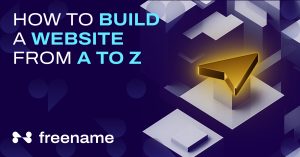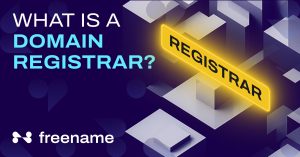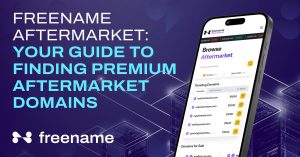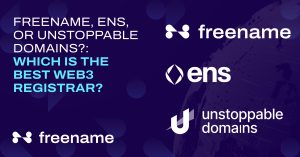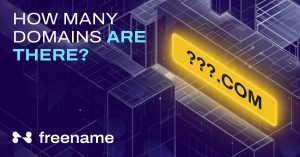Web3 is the future of the internet. It’s designed to be decentralized, user-controlled, and powered by blockchain technology. Unlike Web2, where large corporations own and control data, Web3 enables individuals to have greater ownership over their digital identity, assets, and interactions. It leverages smart contracts, cryptocurrencies, and decentralized applications (dApps) to create a more open and secure online experience.
Web2 vs. Web3
To have Web3 explained, we must start at the beginning and then compare Web2 vs Web3.
- Web1: Otherwise known as “the static web“, this is the first version of the internet (1990s-early 2000s). It was primarily a read-only system, where users could consume information from static web pages without much interaction. Websites were simple, and content creation was limited to a few publishers.
- Web2: The second phase of the internet era, also called “the social and centralized web“. From the early to mid-2000s, platforms like Google, Facebook, and Twitter rose. Users could create content and engage with others. However, Web2 also became highly centralized, with tech giants controlling data, monetization, and digital experiences. Users also often exchange personal data for free services, leading to privacy and control issues.
- Web3: The Web3 meaning that carries the most weight is probably “decentralized internet“. This means that Web3 moves the power from corporations (centralized power) to individual users using blockchain technology and cryptographic security (decentralization). Users can now own their own digital identity, assets, and data. A Web3 definition paints a picture where users have more privacy, security, and control.
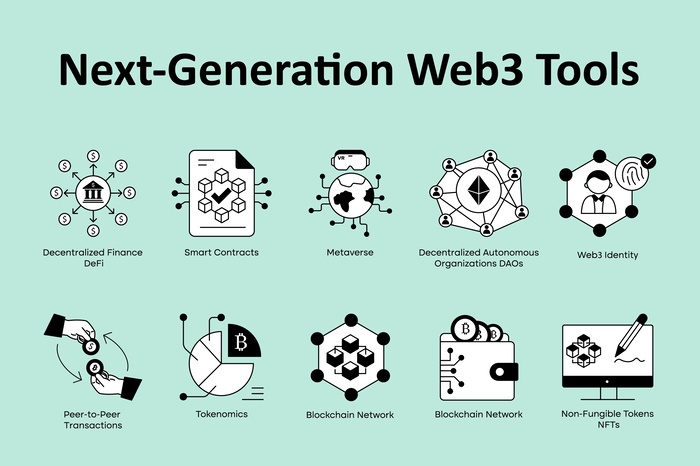
Web3 Core Elements Explained
At its core, Web3 is built on several key principles that redefine digital interactions. Here’s what they are.
Decentralization
Web3 disperses the authority of centralized authorities across a network of users. No single corporation, government, or institution has absolute power over data, transactions, or applications. Decentralized networks use peer-to-peer technology to aim for transparency, censorship resistance, and user autonomy.
Blockchain Technology
Blockchain is the backbone of Web3—a secure and transparent way to record digital transactions to shape a more open digital economy. It powers cryptocurrencies like Bitcoin and Ethereum, supporting smart contracts and dApps (decentralized applications).
Privacy & Security
Web3 prioritizes user privacy by giving individual users control over their data and digital identity. Whereas Web2 practices often store personal information on corporate servers, Web3 leverages cryptographic techniques to protect user interactions. Users no longer have to reveal sensitive private details when a Web3 platform or Web3 domains user technologies like zero-knowledge proofs and other decentralized identity solutions to verify information.
Cryptocurrencies & Tokens
Cryptocurrencies and tokens serve as the digital assets powering Web3 ecosystems. Bitcoin and Ethereum, among others, function as decentralized money. Meanwhile, tokens represent various assets, utilities, or governance rights within blockchain networks. Tokens also enable payments and motivate participation in Web3 projects.
Smart Contracts
As self-executing agreements with terms directly written in code, smart contracts enable automated and trustless transactions on Web3 blockchain networks. They execute actions only when predefined conditions are met. Smart contracts power decentralized finance (DeFi), NFTs, and various Web3 applications.
Decentralized Applications (dApps)
dApps are software programs built on blockchain networks that operate without central control. They run on smart contracts. These Web3 apps are used in various sectors, including finance (DeFi platforms), gaming (play-to-earn games), and social media (decentralized networks). Accessing dApps through a Web3 browser (like Brave or MetaMask) can be more secure and private.
Web3 Domains
Web3 domains, such as .eth and .crypto, are decentralized domain names stored on blockchain networks instead of traditional DNS systems. Unlike Web2 domains, which are controlled by registrars, Web3 domains give users full ownership. They can facilitate crypto transactions and decentralized websites and serve as a universal username for dApps.
Digital Identity and Ownership
Web3 redefines digital identity, making it self-sovereign by allowing users to control their personal data and online presence without relying on centralized platforms. NFTs (Non-Fungible Tokens) are a key part of this, representing ownership of digital assets. They allow users to hold provable rights to art, music, in-game items, and more.
Interoperability
Web3 platforms aim to be interoperable, allowing blockchains and dApps to communicate seamlessly. This facilitates asset transfers, cross-chain applications, and broader ecosystem integration. Enhanced interoperability in Web3 fosters a more efficient ecosystem and enhanced user experience.
Governance and DAOs
Web3 governance is decentralized; users have a direct role in decision-making through Decentralized Autonomous Organizations (DAOs). DAOs operate using smart contracts and token-based voting systems, which are transparent and democratic. This structure shifts the decisive power to the hands of the community rather than a central authority.
Benefits of Web 3.0
While Web3 still has issues, the benefits far outweigh them.
- Greater user control: Users own their data, digital assets, and online identity without reliance on big tech companies.
- Enhanced privacy and security: Web3 security is top-notch, as decentralized networks and encryption reduce data breaches and hacking risks.
- Censorship resistance: No central authority can control or restrict content, ensuring free speech and open access to information.
- Seamless peer-to-peer transactions: Direct transactions are possible without banks or added fees, thanks to cryptocurrencies.
- Smooth-running dApps: Apps run transparently on blockchain networks, preventing platform shutdowns or restrictions.
- Improved financial inclusion: DeFi allows global access to financial services without traditional banks.
- Interoperability and flexibility: Users can transfer digital assets and identities across multiple platforms without being locked in.

The Future of Web3
Web3’s future is bright. There will be a more decentralized, user-driven internet with heightened transparency, security, and innovation. Web3 is still in its early stages. However, advancements in blockchain scalability, interoperability, and usability will drive widespread adoption.
Key areas that are likely to continue evolving are DeFi, NFTs, metaverse applications, and AI interaction. They will give new opportunities for digital ownership and collaboration. Moreover, Governments and lawmakers will likely have a hand in shaping Web3’s future by balancing innovation with security and compliance.
As technology matures, Web3 could redefine online interactions. A future where the internet is more open, inclusive, and autonomous can be expected.
How to Invest in Web3
Want to be more involved in developing Web3? Here’s how you can get involved.
1) Buy Web3-Related Cryptocurrencies
There are various cryptocurrencies and tokens you can invest in to help Web3 development
- Blockchain platforms: Invest in major blockchains that power Web3, such as Ethereum (ETH), Polkadot (DOT), Solana (SOL), and Avalanche (AVAX).
- Web3 protocol tokens: Consider tokens from decentralized finance (DeFi) projects like Uniswap (UNI), Chainlink (LINK), and Aave (AAVE).
- Storage and infrastructure tokens: Projects like Filecoin (FIL), Arweave (AR), and The Graph (GRT) support Web3 infrastructure.
2) Purchase Web3 Domains
Freename offers Web3 domains, which can be a good investment. Domains like .crypto and .eth—typical Web3 domains—have a lot of potential. They can appreciate in value, be used in Web3 ecosystems, or generate passive income through domain sales.
3) Invest in NFTs (Non-Fungible Tokens)
NFTs are a good way to invest in Web3.
- Digital art and collectibles: Platforms like OpenSea, Rarible, and Foundation offer investment opportunities.
- Utility NFTs: Look for NFTs that offer real-world benefits, such as access to communities, events, or products.
4) Participate in DAOs
You can buy governance tokens of DAOs to gain voting rights and investment opportunities. Check out communities like Friends with Benefits (FWB) and DAO Maker to see how a DAO operates and engages.
5) Invest in Web3 Stocks and ETFs
Invest in publicly traded companies involved in Web3 technology, like Coinbase (COIN), Block (SQ), or Nvidia (NVDA). Also, look for ETFs (Exchange-Traded Funds) that focus on blockchain and Web3 technologies.
6) Fund Web3 Startups
Participate in crowdfunding or venture capital opportunities for Web3 startups through platforms like Republic.co or TokenSoft. You can also consider becoming an angel investor or joining investment DAOs that pool funds for Web3 projects.
Web3 FAQ
What is Web3 technology?
Web3 technology is a decentralized internet model built on blockchain, enabling peer-to-peer interactions without intermediaries. It prioritizes user ownership, privacy, and security through smart contracts, cryptocurrencies, and decentralized applications (dApps). Unlike Web2, where corporations control data, Web3 empowers individuals with greater autonomy and transparency.
How does Web3 work?
Web3 operates using blockchain, smart contracts, and decentralized applications (dApps). Instead of relying on centralized servers, it uses peer-to-peer networks, ensuring transparency, security, and censorship resistance. Cryptocurrencies and tokens often facilitate transactions in Web3 ecosystems.
What will Web3 do?
Web3 will revolutionize the internet by enabling decentralized applications and platforms where users have control over their data, digital assets, and online interactions. It aims to remove intermediaries, increase privacy, and create new opportunities for digital ownership through technologies like blockchain and smart contracts.

